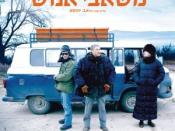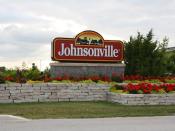"Leadership is not an out-of-reach thing that looms 'up there,' something done by the people in absolute power. It's the everyday thing that people do. It's taking the initiative", states Don McAdams, Director of Member Development and Training (Johnsonville Sausage, 2006, p. 1). Changing from a traditional organization to a transformed organization affects the company's diverse workforce and the stakeholders. Management and workers must develop additional skills to accommodate the changes as well as support systems to assure that the changes are successfully implemented.
Despite differences in size, industry, and nationality of many transformed organizations, four common themes exist that differentiate the process and shape organizational transformations. The common themes are redefining the business and focusing on the customer, teaming and supporting nonhierarchical structures, leadership and shared values, and a change in languages. These four themes occur in some form in many transformed organizations.
Johnsonville Foods, a Wisconsin sausage manufacturer, is an example of a company that has changed from a traditional organizational model to a transformed organizational model.
In the mid-to-late 1990s, Johnsonville Foods recognized that to become a national player, the company had to change the concept of the word boss (PI Worldwide, 2006). Some may believe the real boss of Johnsonville Sausage is the owner, Ralph Stayer, or the managers and supervisors. Johnsonville realized that the real boss is the customer. This empowerment is defined as "not the right to do as we please, but to be pleased to do what is right for our customers" (Lancourt & Savage, n.d., ö10). Ralph Stayer realized that when everyone relied upon him for decision-making, he was creating a roadblock to growth (PI Worldwide, 2006).
At Johnsonville Foods, the company calls the employees "members". The members belong to three team groups, which consist of product performance teams, customer...


